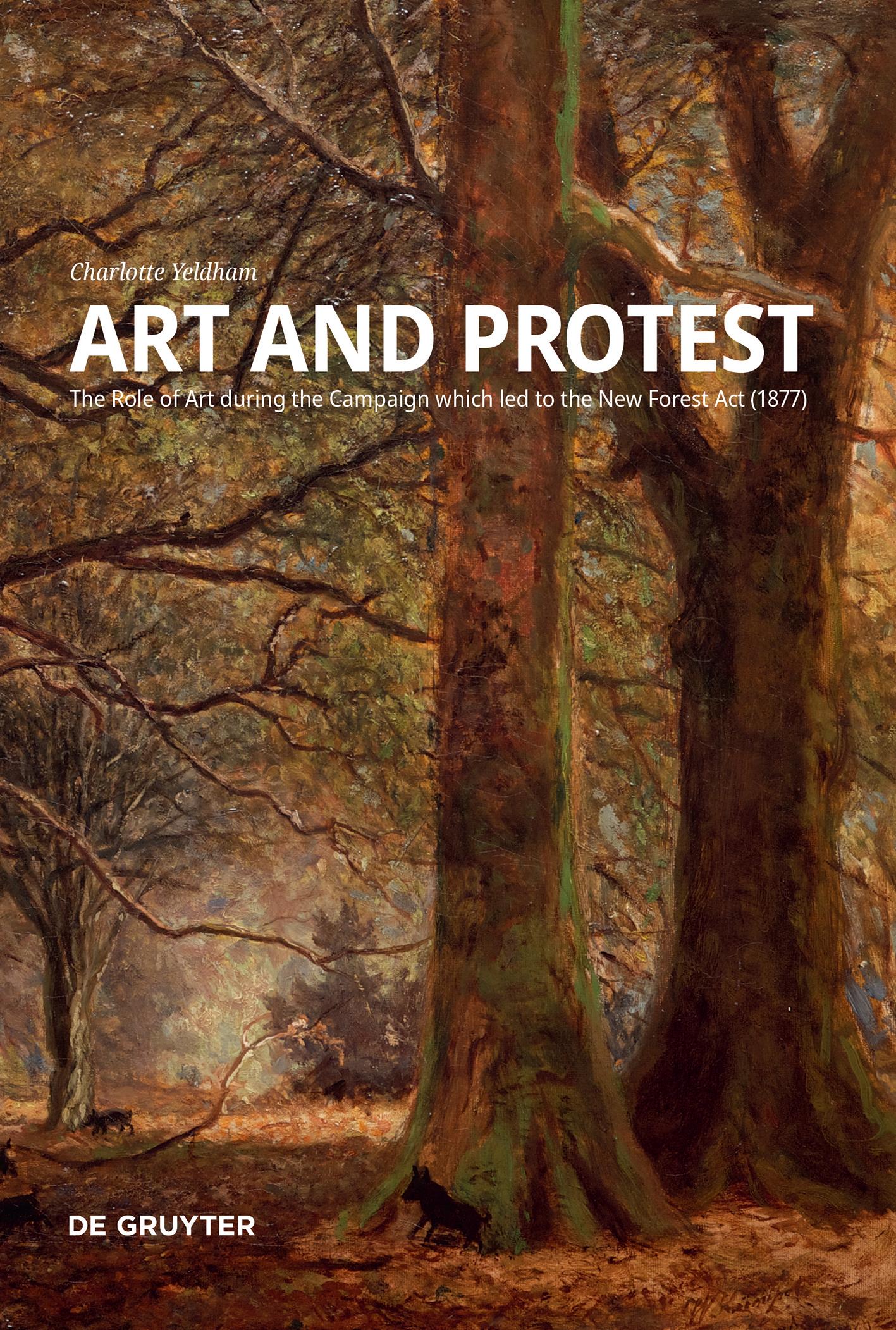
Foreword
TurnerandConstable,Britain’sgreatestworld-classartists,have alottoanswer for.Generationsofartistshave feltinspiredandcompelled to respondandbuild upontheirexample.Thattheybotharrivedlessthan ahundred yearsafterthe birthoftheEnglishschoolofpaintingisperhapsnotserendipity.Allthestars werealigned:Britain’sgrowingglobalreachandnavalpowerintheeighteenth century,fuelledbytheindustrialrevolution,had generated anationalwealth andconfidencethateffecteda significantboostfortheartsculminatinginthe founding oftheRoyal Academyin1768.Demandandexpectationforhighquality inevitablyencouragedinnovation. Turner,thepainteroflight,andConstable’s freshinterpretationsofnaturewouldhugely influencethe youngMonetandthe Impressioniststhusheraldingtheadventoftwentieth-centuryModernism.
Thepan-EuropeanRomanticmovementthatfounditsgreatestexpressionin Britaininlandscapepainting,hadfirstemergedinGermany – itsoriginscanbe traced to theSchlegelbrothers’ Dresdenmagazine Athenaeum in 1789.TheRomanticconnectionsbetweenBritainandGermanyarefurtherexpoundedinCharlotte Yeldham’srevelatory texthere.Romanticismit appearshasalways beenintrinsic toboththeBritishandGermanpsycheamidstthesharednorthernmists.
TreesenjoyanespeciallystronglegacyinBritisharthistoryfromThomas Gainsboroughonwards.Theyfeatureas astrongmotiffortheRomanticsincluding BlakeandPalmer, thepicturesqueandearlynineteenth-centurywatercolour schoolofCotman,Coxandde Wint,thescientificPre-Raphaelite landscapeartists (dotheycarefullydelineateeachtwigandleaforsuggestclusters:theparticularor the generalwastheirgreatdilemma),theCamden TownGroup Post-Impressionists,thepastoraletchersofthe1920s,thePicassoinspiredNeo-Romanticsofthe 1940sand PeterBlake’sBrotherhoodof Ruralistsinthe1970s.
Eventherigoursoftheurban-biasedModernmovementcouldnot avoidthe tree. VictorPasmore’srevolutionarymovetoabstractionfromtheEustonRoad School’sAnalyticalRealismwasinitiallyachievedthroughtree-formsinhis 1940sThames-sidepaintings(asmorefamouslywasPietMondrian’sintheNetherlands;originallya Post-Impressionisttreepainter,hismature deStijl abstractsresemblecellulosestructuresunderthemicroscope).
Thisrichand versatilesubjectmatterwithitsuncannysynergies to thehuman condition(treesalsocompeteandcollaborate)haslongbeendeployedbyartists forits mythological,religious,andpoliticalassociationsaswellas adeviceforstylisticdevelopment.Britain’streeartoverthepastthreecenturiesrepresents asignificantstrandinwesternculture.PerhapsitisnosurprisethatBritainishometo moreancienttreesthantherestofwesternEuropeputtogether.
https://doi.org/10.1515/9783111025452-001
TheRomanticnotionoftheartistasheroicindividualstandingapartfromsocietyandcommentingonlifethroughtheirartthattookrootatthebeginning of thenineteenthcentury, marrieswiththedeparturefromthehithertouniversalunderstanding ofwhothebestartistswere.Thus,theestablishmentcommissioned traditionalandacademicartistswhilethe youngandprogressive generationsfavouredinnovative ideasandprogenitors.The ageofrevolutionbegatprotest,therejectionofstatepoliticsandthestatusquo.Thisculminatedinthepoliticaldimensionthatbecame acentraltenetofModernism.Inthisrespectthe ‘Save theNew Forest’ artistcampaignersofthe1870swere,unbeknown to them,perhapsahead ofthecurveinsuchengagementinthecauseof anaturalenvironment.
Fromthelate1960s ayoung generationofartiststurnedonce againtolandscape.Buttheirswouldbe aradicalnew approach.Earth Art, knownasLand ArtorEarthworks,isa movementthatemployselementsofthenaturallandscape tocreateon-sitestructuresrecordedasphotographs,sometimeswithtext.Other artforms,simpleinterventionsofteninvolvingcircles, linesandpatternsusing organicmaterialssuchasstones,twigsandflowers,embodya direct,uneditedrelationshipwiththeenvironment.Plainwalking,oftenlong-distance,becamethemediumformanyoftheseartistsincludingRichardLongandHamishFulton.The movementwasconceivedfrom MinimalismandConceptualismandreflectedincreasingconcerns abouttheenvironmentaldamagebeingdone to theEarthas wellasanattempt to escapetheconstraintsofthecommercialart market.Born duringtheCold War, bothinthe USAandEurope,LandArtcapturedtheecological, social,andculturalconditionsofthetime.Throughthisrejectionofurbanism,materialismandglobalization,LandArtexpressedthe yearningfor aspiritualutopianPlanetEarthastheun-spoilthomeofhumankind.
Morerecently, withtheclimatecrisisnowcentrestageinourlives,manyUK museumsandgallerieshave rushedheadlongontothebandwagonandecologysubjectartexhibitionshave multipliedexponentially. In 2020,London’smighty HaywardGallerystaged AmongtheTrees – agroupshowexploring,thecurators said,ourcomplexrelationshipwithtreesandforestsandtheirroleinourlives andimaginations.Inthespringof 2022,SouthamptonCityArtGallerystaged twooverlappingmajorclimate-crisisexhibitions,oneonrisingsealevelsand theotheronbiodiversity,andthespeechesatthelatter’sprivateviewincluded apassionatecalltoaction to save theplanet – ahitherto unprecedentedsetof events.TheArborealists, alooseassociationofBritishtreeartistsofdiverseapproachunitedbytheirsubject, have stagedanimpressive thirtyexhibitions sincetheirinauguralshowattheRoyalWestofEngland AcademyinBristolin 2014.Thedoubleexhibition(historicandcontemporary)fromwhichthegroup waslaunched, UndertheGreenwood: PicturingtheBritishTree,wasstagedat theSt BarbeMuseum &ArtGallery, Lymington,intheheartoftheNew Forest
in 2013tocriticalacclaim. Withmany moreprojectsandexhibitionsinthepipeline,theyarepushingatopendoorsandridingthezeitgeisteco-wave.This Jubilee yearof 2022 is verymuchthe yeartostagetreeexhibitionsincelebrationofthe Queen’sGreenCanopyprojectandtheArborealistsarebookedforfour.
Publicationsonthethemehave alsoproliferated,especiallyontrees,withGermanex-forester Peter Wohlleben’s TheHiddenLifeofTrees,anextraordinaryexposéoftrees’ affinitywiththeanimalkingdom,leadingthefieldforme.
Thecampaigningartistsofthe1870swouldsurelyhavebeenamazedtodiscoverthatallpoliticalpartiesatthelast generalelectionpromisedtoplantmillionsof treesintheirmanifestos,eachvyingtooutdotheiropponentsinnumbers. Trees, thelungsoftheplanet,assymbolofour ravagedandfragilenaturalenvironment, have trulybecome apowerful,politicalhotpotato.
Charlotte Yeldham’sground-breakingtreatisethatfollowsthispage,theresult of muchpainstaking andforensicresearch,ismorethantimely. Thesuccessofthe artists’ campaigninthe1870stosave theNew Forestfromenclosureandcommercializationandforthebenefitofallgivesfurtherweighttothenotion,asiswidely believednowbyscientists,thatthewaytopeople’sheartsandmindsisnotnecessarilythroughthedisseminationofdataorlogicalargumentbutthroughtheemotions.London’sNew ForestExhibitionof1875 successfullyprovedthispremisea longtime agoandlit afusethatnowburns verybright.I wouldlovetohave seenit.
TimCraven Former Curator, SouthamptonCityArtGallery FounderofTheArborealists MemberofTheLondonGroupJune 2022
Introduction
Recent yearshave seenincreasingecocriticalinterestinthenineteenthcentury,a periodwhichwitnessedtheemergenceofwhathasbeentermed ‘environmental consciousness’,the appearanceofseminaltextsbyAlexander vonHumboldt, HenryDavidThoreau,CharlesDarwin,George PerkinsMarshandErnstHaeckel amongothers,andthefirstuseoftheword ‘ecology’ . ¹ Haeckeldefinedecology as ‘theinvestigationofthe totalrelationsoftheanimalbothtoitsinorganicand toitsorganicenvironment’ andecocriticismisaccordinglybasedonaninterdisciplinary approach governedbyholism,non-hierarchyandrelatedness.² Maura CoughlinandEmilyGepharthave mappedthedevelopmentofecocriticismrelating toarthistoryin EcocriticismandtheAnthropoceneinNineteenth-CenturyArtand VisualCulture (2020).InthistheyidentifyGregThomas’s ArtandEcologyinNineteenth-CenturyFrance: TheLandscapesof ThéodoreRousseau (2000)as ‘groundbreaking’ inthatThomaswasthefirst ‘to connectanemergingnineteenth-century popularscientificecologicalconsciousnesstoanartist’slandscapeimagery’ ³ Such connections,basedonartworks,areoftenthefocusofecocriticalattentioninart history.⁴
Thomasusefullydistinguishedbetweentwosides to ecology, thescientificand thepolitical,bothrootedinRomanticismandbothrelevanttoRousseau.⁵ Notonly didhiswork,thematically andstylistically, reflectanemergingscientificviewof natureas ‘aself-ordering systemofincessantorganicinteractions’,Rousseauhim-
Jonathan Bate exploredtheemergenceof ‘environmentalconsciousness’ in RomanticEcology: WordsworthandtheEnvironmentalTradition (LondonandNew York:Routledge,1991). Keyecocritical textsinrecent yearsareLaurence W. MazzenoandRonald D. Morrison,eds., VictorianWritersandtheEnvironment:EcocriticalPerspectives (LondonandNew York:Routledge,2016);Dewey W. Hall,ed., VictorianEcocriticism: ThePoliticsofPlaceandEarlyEnvironmentalJustice (Lanham, Boulder,New York,London:Lexington, 2017).
Thistranslation – originatinginW.C.Allee,A.E.Emerson, O. Park, T. ParkandK. P. Schmidt, PrinciplesofAnimalEcology (PhiladelphiaandLondon:Saunders,1949) – isgiveninRobert P. McIntosh, TheBackgroundofEcology:Conceptand Theory (Cambridge:Cambridge University,1985), 7. Fora forcefulargumentinfavourofthe applicationoftheseprinciplesinarthistory,seeAndrew Patrizio, TheEcologicalEye:AssemblinganEcocriticalArtHistory(rethinkingart’shistories) (Manchester:Manchester University,2019),introduction.
MauraCoughlinandEmilyGephart, eds., EcocriticismandtheAnthropoceneinNineteenth-CenturyArtandVisualCulture (New YorkandLondon:Routledge,2020), 6.
SeeforexampleStephen F. Eisenman,ed., FromCorotto Monet: TheEcologyofImpressionism (Milan:Skira, 2010).
GregM.Thomas, ArtandEcologyinNineteenth-CenturyFrance: TheLandscapesofThéodore Rousseau (New Jersey:PrincetonUniversity,2000),5 – 10.
https://doi.org/10.1515/9783111025452-002
selfwasalsopolitically involvedinenvironmentalconservationinthe Forestof Fontainebleau.⁶ Hewas avociferousobjector to commercialpineplantations, theconcomitantdestructionofancientdeciduouswoodlandandtheincursionof touristsinthe Forest,andhisindividualpetitiononbehalfofartiststoNapoleon III(throughtheducdeMorny)in1852washugely influentialinsecuringtheprotectionof certainsitesintheImperialDecreeof1861.⁷ ThomashasdescribedRousseauas ‘thewesternworld’sfirstconservationist’ . ⁸
Thepresentstudyexaminesforthefirsttime,theslightlylater,butfarmore extensive involvementofartandartistsinsavingtheNew ForestinHampshire (aNationalParkfrom 2005)fromenclosure,beforethepassingoftheNew Forest Actin1877. This Actrecognizedtheinterdependenceofenvironmentalandhuman interests – thelatterincludingboththoseofthelocalcommoningpopulationand thoseofthebroaderpublic.Indeedithasrecentlybeendescribedas ‘landmark legislation’ marking ashiftfromaneconomic to asocial-culturalviewofnatural environments.⁹ Asignificantepisodeinthehistoryofconservation,orpolitical ecology,thismovementisalsothereforerelevantinthecontextoftwo guiding ecocriticalprinciplesoutlinedbyDeweyHallin VictorianEcocriticism (2017)inrelation to nineteenth-centuryliterature.As aspacewhosenetworkofaffiliations wasthreatenedbyeconomicprioritiesandcontestedbyvarioushumanandnaturalinterests,theNew Forestatthistimeillustratesthe ‘politicsofplace’ . ¹⁰
Hall’ssecondprincipleof ‘earlyenvironmentaljustice’ isbasedlargely onegalitarianismintermsofhumanrightstoenvironmentalbenefitsandisconsequenton thefirst.Incontradistinction to earlierecocriticalanalysis,environmentaljustice ecocriticismis concernedwith ‘themannerbywhichliterature[orartpresumably]furtherstheeffortsofearlyenvironmentaljusticeorcallsattentiontoexploitation’ . ¹¹ LiteratureaddressingtheNew Forestissueisnotthe mainfocusherealthoughreferenceisinevitablymade to relevanttexts;thesubjectdeservesfuller investigation.Theargumenthereisthatartwasusedextensively andproactively
ThequotationisfromGregM.Thomas, “From Ecological VisiontoEnvironmentalImmersion: ThéodoreRousseautoClaudeMonet”,inEisenman, CorottoMonet,47.
ForRousseau’s ‘political’ involvementanddetailsoftheDecree,seeThomas, ArtandEcology, 173
6, 178, 214
17.
Thomas, “Ecological Vision”,48.
PaulReadman, StoriedGround:LandscapeandtheShapingofEnglishNationalIdentity (Cambridge:Cambridge University,2018),184.
Hall, VictorianEcocriticism,7.SeealsoLauraDassowWalls, ThePassage toCosmos: Alexander vonHumboldtandtheShapingofAmerica (Chicago andLondon:UniversityofChicago,2011), xvi.
Hall, VictorianEcocriticism,7– 8.Hall’sdefinitionisbasedon Joni Adamson,MeiMeiEvansand RachelStein,eds., TheEnvironmental Justice Reader:Politics,Poetics,andPedagogy (Tucson: UniversityofArizona, 2002).
todraw attentiontotheareaanditsinhabitantsandtothebenefitsofpublicaccess – thusfurthering environmentaljustice – at atimewhenincreasingenclosure forcommercialgainwasthreateningits veryexistence.
Between1869and1877 – the years duringwhichthethreat to theNew Forest became apublicissue – atleast305worksofartrepresentingtheareawereexhibitedatleadingartexhibitionsalloverthe country,anunprecedentedfigure forthe New Forestandalsofarinexcessofrepresentationsofanyotherspecificnatural environmentoverthesameperiod.¹² In1875,while aCommissionofInquiryinto thestateofthe Forestwashearingevidence,artbecamedirectlyinvolvedinthe campaign.OfninepublicpetitionspresentedtoParliamentatthistime,theArtists’ Petitionwasthemostelaborateand,unlikeRousseau’sindividualentreaty,itwas signedbythemostprominentartistsoftheday. Anotherpetitionwasonbehalfof artstudents. Artists,includingEdmundGeorge Warren,alsowroteletterstothe press.Themoststrikingartisticintervention,however,tooktheformofanartexhibitiondevotedexclusively toNew Forestthemes, heldinRegentStreet,London, which ranfrom MaytoAugustofthat year.TheExhibitionofNew ForestArt,widely reviewedinthepress,wasanentirelynewinitiative.Althoughexhibitionshad previouslybeenheldinaidof acause,thiswasthefirsttimethatsuchanexhibitionhadbeenstagedforthepurposeofprotest,ratherthanfund-raising.Never beforehadexhibitedworksbeendevotedentirelytothethemeof acause.And noexhibitionhadeverpreviouslybeenorganizedonbehalfof anaturalenvironment.
Themaininstigatorandorchestratorofthisartisticdrive wasGeorge Edward BriscoeEyre(1840 – 1922),locallandownerand awidelytravelledmanwithinternationalknowledge offorests,whowascommittedtothepreservationoftheNew Forest.¹³ Echoing Humboldt astothemosteffective wayofconveyingtheintegrity
Thisfigure(andallfuturereferencestoexhibitedworks)isbasedonCharlotteYeldham, “PrincipalEnglish Forestsand WoodlandLandscapesinArtExhibited(1760 – 1914)in32UK Townsand Citiesincluding London:ListsofSpecificTitles:New Forest,Burnham Beeches,Windsor Forest,EppingForest, Sherwood Forest,ForestofArden,Ashdown Forest, Charnwood Forest, ForestofDean, Marlborough Forest”,(unpublishedmanuscript,2021), 35 – 43.CopiesareheldbytheCourtauldInstituteofArt BookLibrary (System Number000760043)andtheChristopher TowerLibrary,New Forest Heritage Centre, Lyndhurst(FF11/46.1). Availableonlineathttps://nfknowledge.org/record/ nfc-164796/
Fora briefaccountofBriscoeEyre’slife,seeMonicaGiles, Dio:TheLifeofDorothyEyreandof JackCrosthwaite,HerHusband (Leominster:Orphans[1990s]),1– 9. SomeoftheCrosthwaite-Eyre Archive(listedin acatalogueofitemsintheCrosthwaite-EyreArchivecompiledbytheHampshire RecordOfficeand containingmaterialrelatingtoBriscoeEyre)hasrecentlybeendonated to the Christopher TowerLibrary,New Forest HeritageCentre,Lyndhurst,whereitiscurrentlybeingcatalogued.
ofnaturalenvironments,BriscoeEyrebelievedthatimagerywasmorepowerful thanwords,that ‘seeingisbelieving,andanounceofseeingoutweighsa tonof wordsandfacts’,a viewwhichunderpinnedhisinvolvementofartistsanduse ofartinthiscampaign.¹⁴ Crucially – andinpart duetohismembershipofthe ‘DeutscherVereinfür Kunstund Wissenschaft’ (German Athenaeum), aprominent Londonclub – BriscoeEyreenlistedthesupportofGermanlandscapeartistsresidentinLondon,oneofwhom, WilhelmKümpel(oftenreferred to intheUKas William Kümpel),playeda vitalroleintheprotest.Visualadvertisementofthe1875 exhibitionwasentirelybyGermanartists.
AsfewNew Forestpaintingsfromthisperiodhave beenlocated,itisimpossible togeneralizeonthepresenceorabsenceofwhatThomastermed ‘scientific’ ecologicalthoughtintheartworksthemselves.Thefullextentofartisticresponse emergedfromwhatcouldbecalled anon-hierarchicalornon-exceptionalanalysis offoresttitlesinexhibitioncatalogues,notananalysisofknownworksorartists. Whatcanbestatedrelatesto anineteenth-centurytrend towards ‘environmental immersion’ identifiedbyThomasinthecontextof Frenchlandscapepainting.¹⁵ Thesuggestionhereisthatthere was asimilartrend,albeit verydifferentinits manifestation,inBritain.SeveralartistswhoadoptedtheNew Forestas asubject atthistimewerenotedfora new, moreorlessphotographicrealism – meticulous detailandatmosphericandseasonalparticularity,sometimesdescribedasscientificinitsapproach,andwhichhadtheeffectofimmersingtheviewerinnatural experience. SuchaneffectwasanimportantfactorintheorganizationoftheNew ForestExhibition. Furthermore,in astrikingparallelwithhealthandrecreative prioritiesoftheday – prioritieswhichweretoformthebasisoftheearlyOpen Spacesmovementinthe1860sofwhichtheNew Forestcampaignwas apart – reviewsofexhibitedrealistlandscapefromthe1850softenprioritizedeffectsofrefreshmentonthepredominantlyurbanviewer.lnotherwords,realisticallyrepresented,aswellasactual,naturewasperceivedtoplaya roleinman’sphysicaland mentalwell-being.ThisisanaspectofwhatNicholasGreen,alsointhecontextof nineteenth-century Frenchart,hascalleda twinningof ‘immersionwithpictorialism’ andmaybesituatedwithin alongstandingtradition(extensively exploredin literature)ofpastoral ‘retreatandreturn’ . ¹⁶ At atimeofacceleratingenclosure whennaturalenvironmentssuchastheNew Forestwereunderincreasingthreat
LetterfromBriscoeEyretotheeditorofthe Daily Telegraph,May 24,1875, 3.
Thomas, “Ecological Vision” .
NicholasGreen, TheSpectacleofNature:Landscapeand BourgeoisCultureinNineteenth-Century France (Manchester:Manchester University,1992),184.Thepastoraltraditionisextensively exploredin TerryGifford, Pastoral (LondonandNew York:Routledge,2020);for ‘retreatandreturn’ see1,16.
andwithgrowingrecognitionoftheimportanceofnatureforthehealthandwellbeingofallclassesofsociety,realistic,immersive naturalrepresentationcarriesan implicitacknowledgementoforganicrelatednessandinterdependencebetween humanandnon-humannature – afeatureofwhat TerryGiffordhas termed ‘post-pastoral’ inthecontextofliterature – aswellasimplyingtheinjusticeofimpedinghumanaccess.¹⁷ To thisextent,currentlyknownartwork(andartworkdeduciblefromanartist’sstyleorreviews)depictingtheNew Forestatthistime,may besaid to reflectemergentecologicalconsciousness.
ArtisticinvolvementintheNew Forestcampaignwas aresponsetopolitical developmentsandthesubjectisthereforetreatedinchronologicalsections. Asurveyofthesocialandpoliticalbackgroundisfollowedbyanexaminationof availabledataonNew Forestartbetween1869and1874.The year1875,whenboththe politicalsituationandartisticengagementreached aclimax,isexaminedseparately,with asectiondevotedexclusively totheNew ForestExhibition.A shortsection thenexaminesartproducedbeforethe1875CommissionofInquiry’sconclusions becamelawin1877.
